Symphony No. 9 — magnum opus
In Symphony No. 9, players compete to sponsor their favourite composers over several rounds of gameplay, putting on exquisite royal concerto’s periodically, which must match the mood of the people in terms of both how lavish they are, and which musicians are in attendance. The lives of the composers are represented by coloured blocks, and even though they die when their stock runs out, their legacy will live on for hundreds of years.
Each game of Symphony No. 9 takes place over six rounds of play, and each round consists of three phases; sponsorship, concerto and then cleanup. In the sponsorship phase, players each take up to three lots of coloured donation cubes, with two cubes being taken each time. The first time a player takes cubes, it’s free, then the second and third times cost four and eight gold respectively, but it’s also worth noting that play passes around the table before each round of donations, so a player could not, for example, ditch twelve gold and claim six cubes on their first turn.
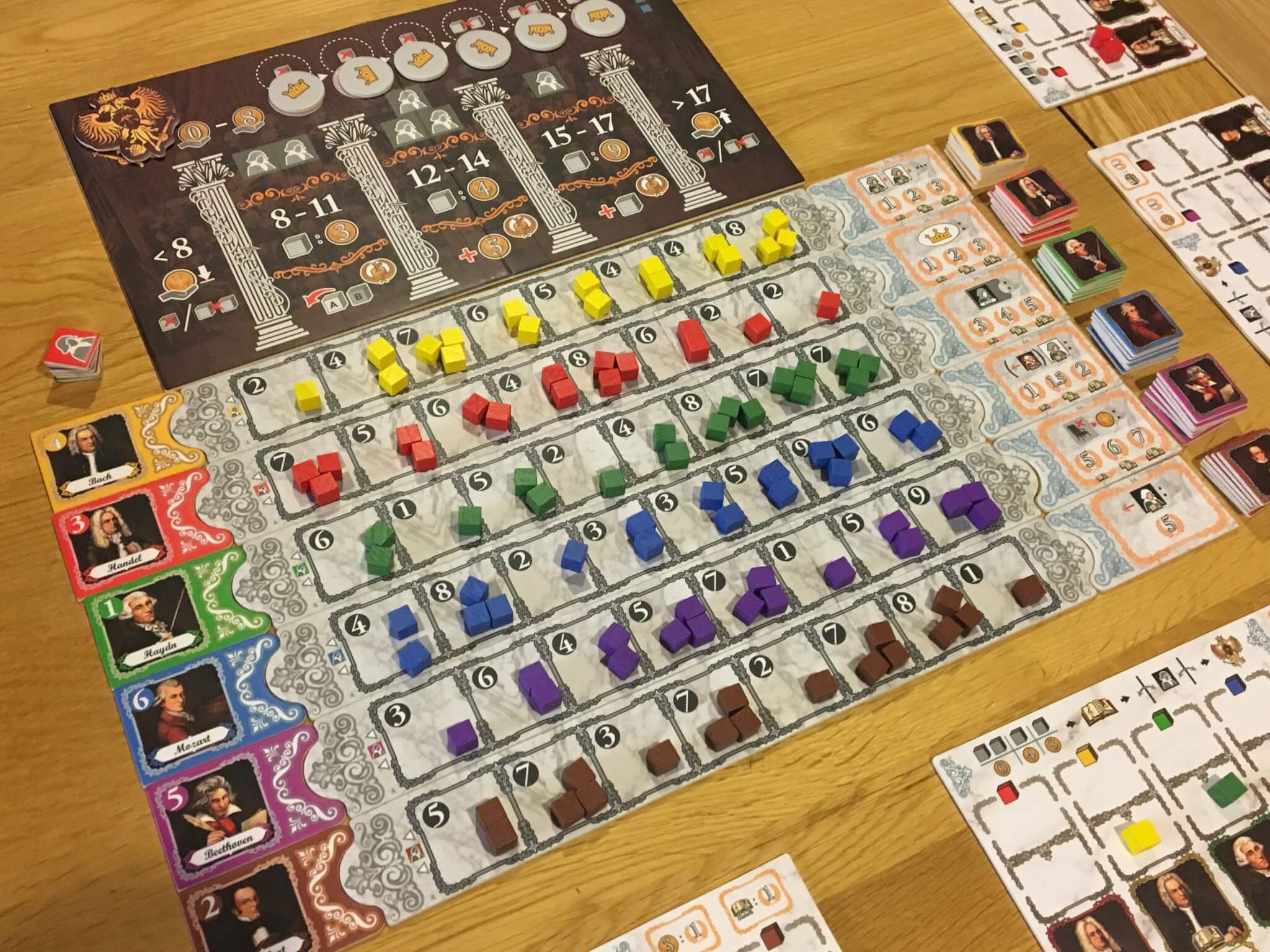
The donation cubes represent how much goodwill a composer has towards the player, and once all players have finished taking cubes (whether once, twice or three times) the cubes that each player has in each colour will be compared. The player who has invested most in each composer will trade in half of their cubes of that composers colour to gain one composition token, representing that as the result of their goodwill, they have been gifted a piece of music. Dead composers (who have ran out of cubes) unsurprisingly, don’t give out compositions.
After this phase is complete, the concerto phase begins. during setup, the composers will each be positioned into one of the three areas on the concert board. Players will want as many of the musicians that they have backed to feature in the concert as possible, meaning that they will want to engineer the concert towards the numbered range that is shown below their musician(s.) To do this, a blind bidding phase will happen, where each player commits monetary support to the concerto.
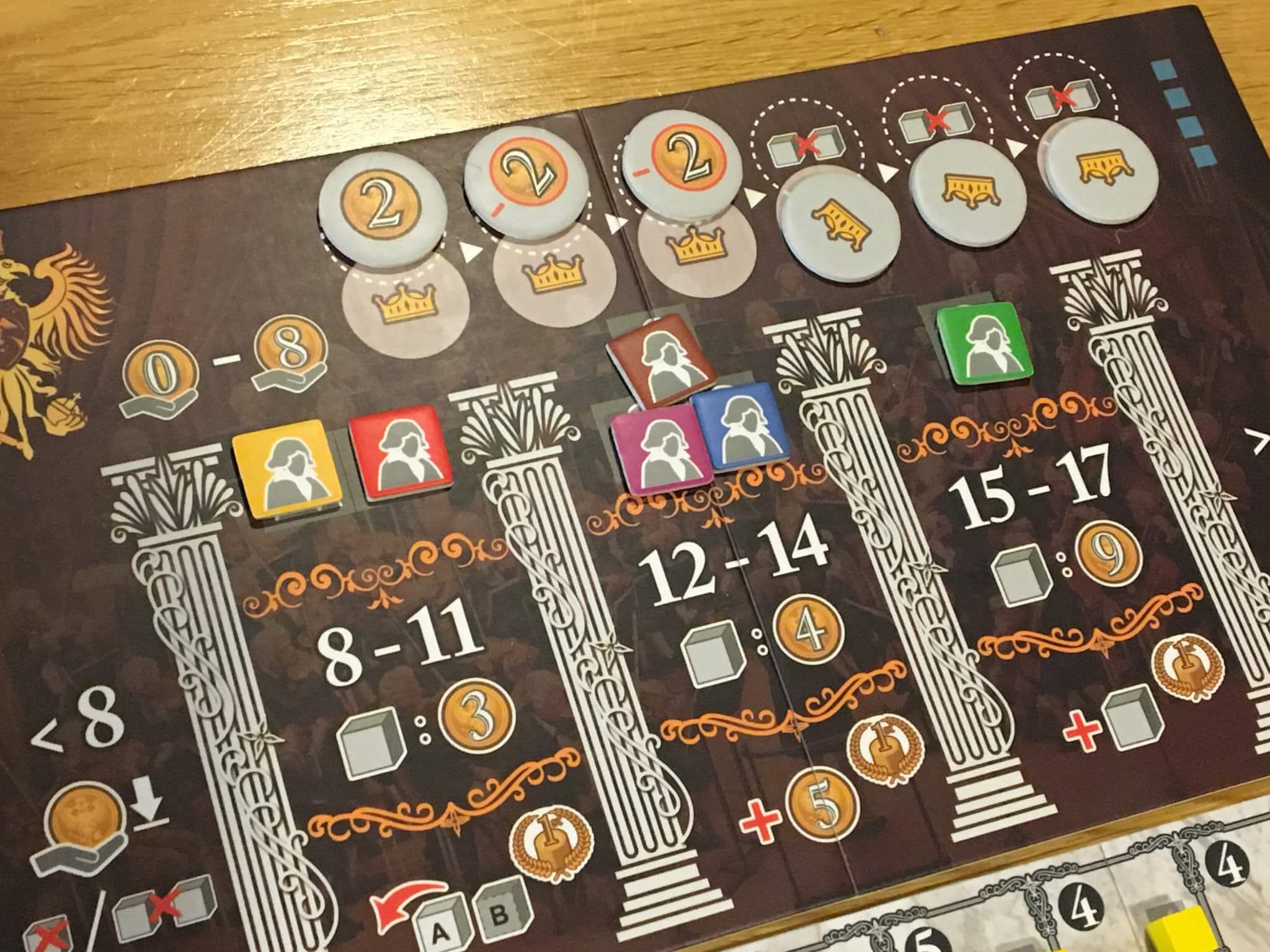
This may sound a little confusing to explain, but it’s quite intuitive once you understand it, and basically involves guessing at the value your opponents will bid, to then calculate your own. A royal coin is used to indicate whether there is royal support (plus two) or denial (minus two) of the concert, or if the monarch is even bothered at all (there is a neutral result as well) and the total determines the success of the concert. The catch is that if the players invest too much, or too little, then the concert will fail and the player who donated the least or most will pay a penalty.
Should the concert be a success, then everyone who had donation cubes associated with the composers in the concerto will be paid money in exchange for discarding their cubes, and there is also a bonus for each player who brings the most interest to a successful concert. Gold, composition sheets and furniture (handed out at the beginning of the game and worth VP if kept to the end, rather than being sold) are all worth victory points, so there’s also a fine balance when planning a concerto between speculating to accumulate, and simply saving what you have.
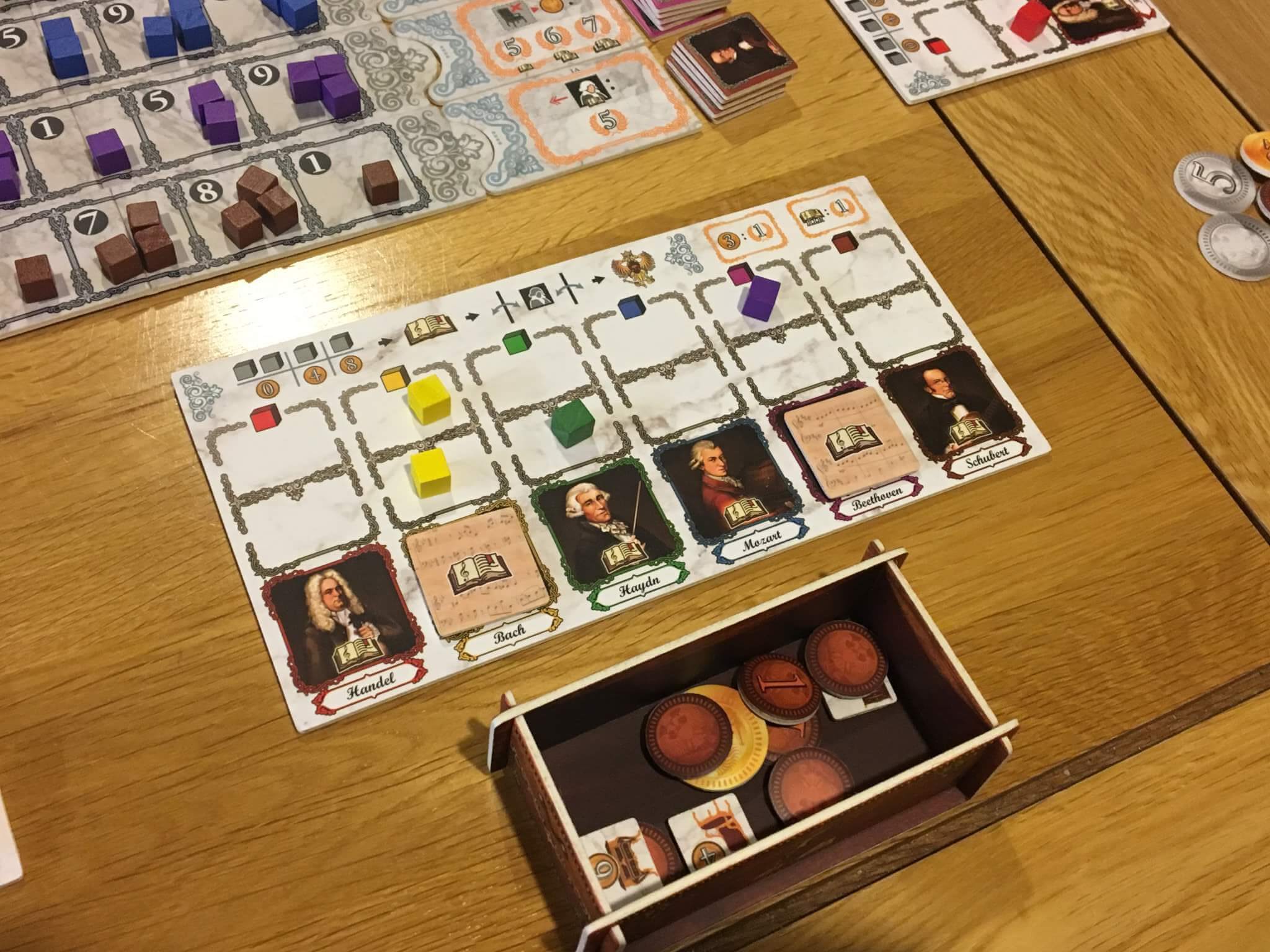
Symphony No.9 is really well represented by the pieces that are provided in the small box from Moaideas. The box itself is packed to bursting, and it contains several very attractive tracks for the musicians, as well as several random setup elements that slot together really well. There’s also the composer tiles, compositions, coins and the concert board, all of which are exceptionally well made.
Each player also has their own little box that holds their money and any furniture not yet sold, which means that finances are kept secret from the other players – which is key to gameplay. The coloured cubes are simple yet effective, and whilst in themselves they are not spectacular, their colourful nature sits well against the white backdrop of the board tiles. The manual is good, with a few typos that don’t affect gameplay and a clear layout.
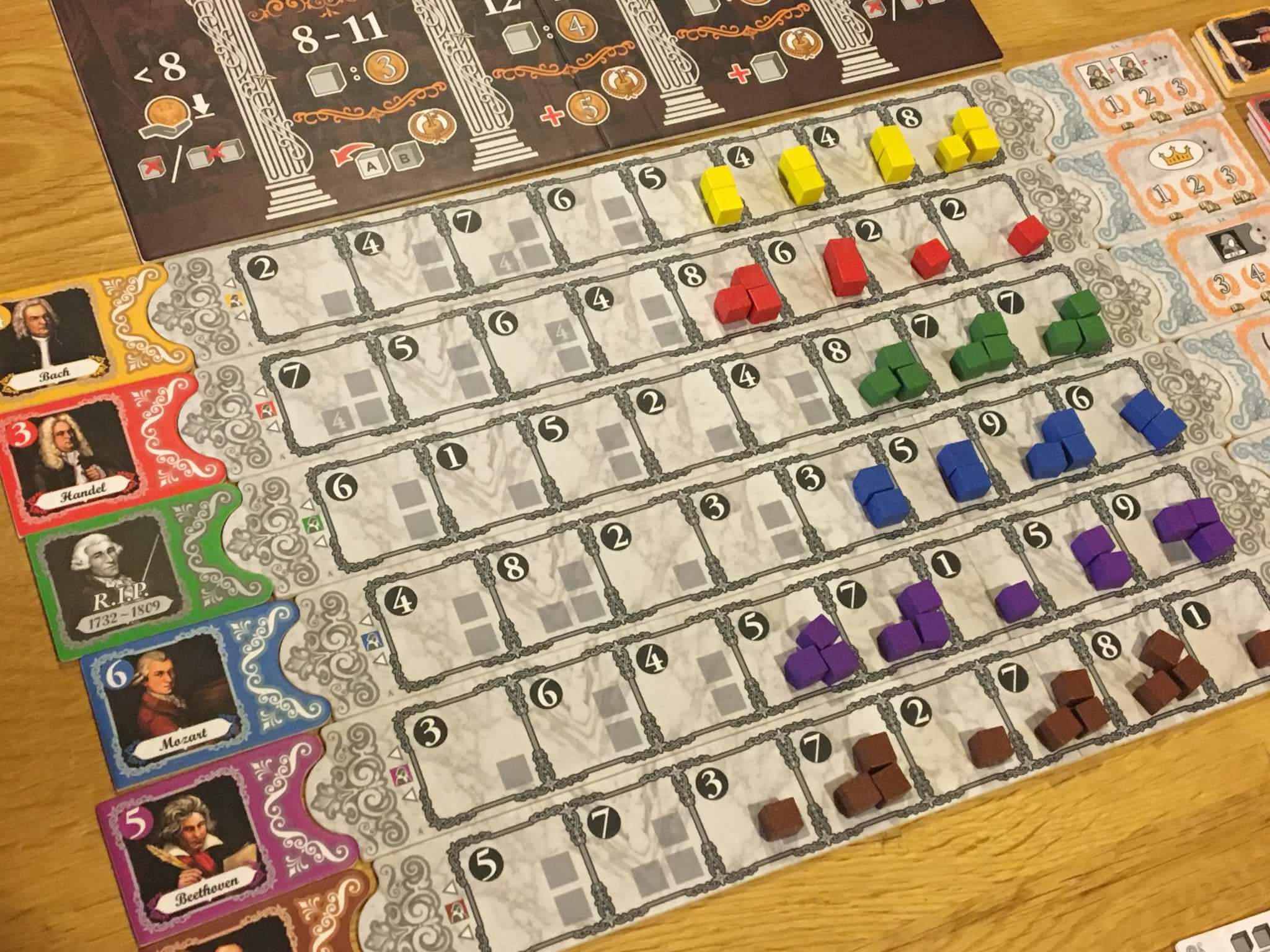
The difference between the sponsorship and concerto phases in Symphony No. 9 give the game two distinct mechanical elements that must both be considered. When it comes to sponsorship, players will need to invest wisely across several composers, whilst also being mindful that it’s necessary to pick up composition pieces to enable some aspects of end game scoring. With this in mind, there’s a planning element to this phase, as well as a decision about when to invest extra coins.
The concert phases gives a classical hidden information, guessing and bluffing game, built around a bidding mechanic. It’s very interesting to see the different possibilities, because you might find that you and one other player are allied in targeting a specific value of concert in one game, then in the next, everyone is working to achieve completely different aims. The penalty for over or under bidding to break the auction deliberately isn’t so great that it would put off a runaway leader who didn’t want to get caught in the last round, which is a shame, but it’s not a fine you’ll want to pay when the game is tighter.
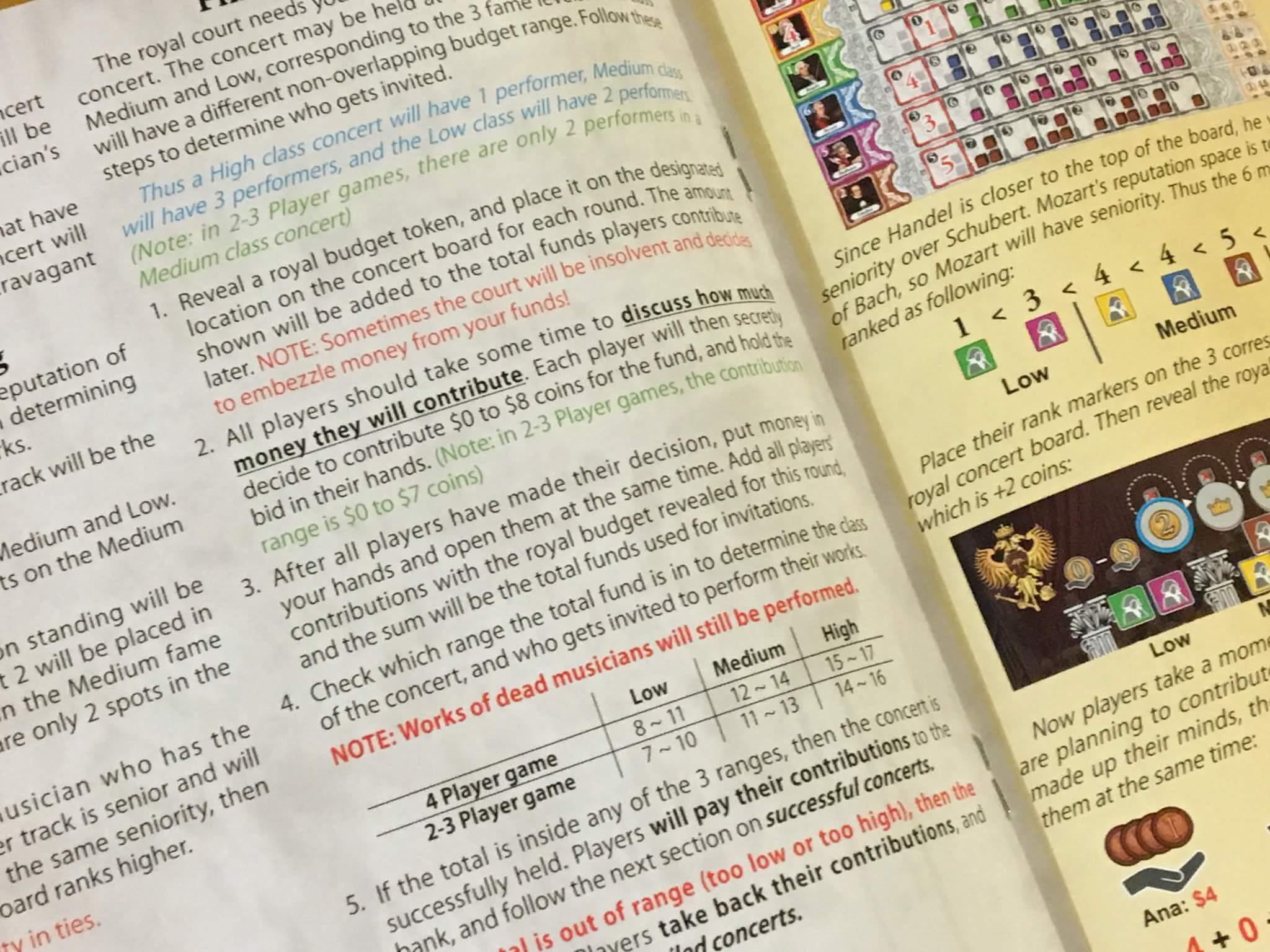
Symphony No. 9 uses the musical theme really well both visually and in terms of the narrative that takes players through the rounds, bumps off musicians, shows the ebb and flow of fame etc, but not so much in the mechanics of the game. The musical sheets and iconography are more or less just for show, and there’s no real musical element to the game, which may be a problem for some – although not for me.
As a lightweight, fast and thematic eurogame with elements of planning, bluffing and a decent bit of indirect interaction, Symphony No. 9 does little wrong. The very strong components and visual theme really enhance the package, whilst the small box will be a Godsend for some. Overall, this is a delightful little package that really surprised me, and I’d love to see more efforts to develop games with this kind of less common theme, especially when done as smartly as Moaideas have done here.
You can find out more about Symphony No. 9 on the website of publisher, Moaideas.

Comments are closed.